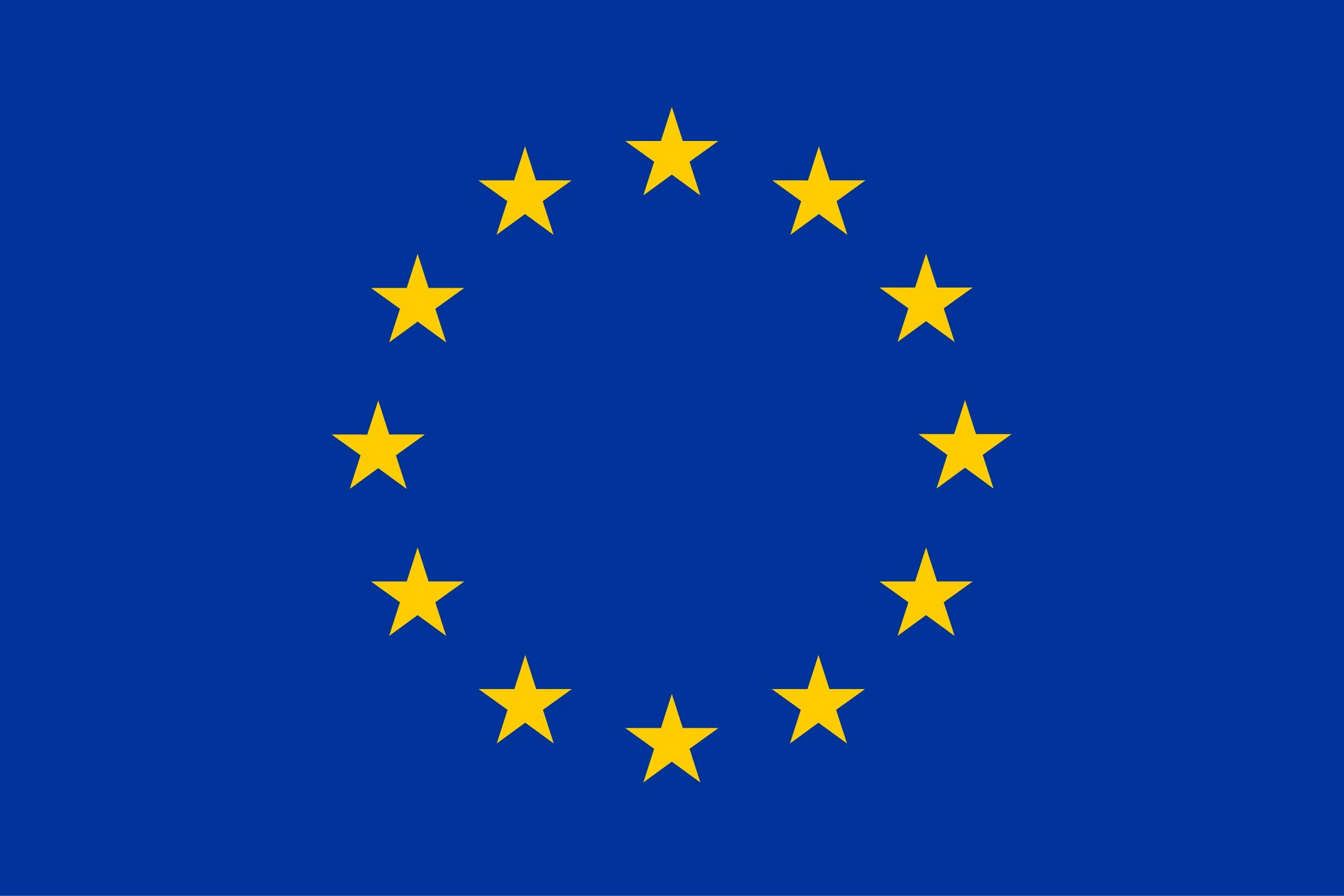For those asking “Why bother? The energy usage is tiny”.
https://energy-efficient-products.ec.europa.eu/product-list/smartphones-and-tablets_en#consumers-1
Mobile phones and tablets produced under these rules will save almost 14 terawatt hours in primary energy each year by 2030. This is one third of the primary energy consumption of these products today. The new rules will also help to optimise the use and recycling of critical raw materials.
In 2030, the savings on EU27 acquisition costs are € 20 billion, which combined with € 0.6 bn lower energy costs and € 0.8 bn additional repair costs, leads to € 19.8 billion (22%) expense savings (€ 98 per household).
So basically, by promoting energy efficient and repairable devices, the plan is to save €20bn annually in savings and not to generate 14TWh of electic power across the EU. That power saving is about the annual output of a single nuclear reactor. (1.6GW x 24h x 365.25d = 14TWh)
I was about to comment how this number doesn’t make sense, but reading the article they mention the power savings for phones specifically is actually 2.2TWh per year, which might be realistic. The rest of the 14 TWh comes from landline phones (2.2TWh) and energy used to produce phones that would be saved (8.1 TWh) from the lifetime extension measures, that aren’t even related to the power efficiency of phones and won’t take place in the EU.
However, even these numbers are overinflated when you take into account they’re using a PEF factor of 1.9, meaning they multiply the actual power usage by 1.9 to adjust for stuff like power transfer losses (only 5-10%) and the inefficiency of generating power from e.g. fossil fuels (because e.g. petroleum might only convert 40% of its potential energy to electricity), but when people typically talk about power usage they’re talking about the actual amount of electricity that needs to be generated, not this abstract representation of it, meaning that e.g. phone electricity savings are actually only 1.1TWh-1.2TWh.
I was thinking at first that this would lead to even more aggressive “app optimization” where it would refuse to notify alarms you’ve explicitly set due to battery life concerns.
But instead there’s a better way, which I hope manufacturers will take. Perhaps smartphone chips can stop chasing absolute peak performance and instead focus on good performance at a reasonable power budget.
Of course the biggest problem is bloated software but idk how we can fix that.
There’s multiple levels to it:
Sure, the chip makers make halo performance chips, but that’s because the phone makers are pushing them to make those chips for halo phones. The reason for that is that the public buy (or at least rent) halo phones.
Educating the public that there are reasons to buy more efficient phones should help shape the demand curve of the whole industry.
I think the big value of these labels are not the energy class (like for bigger appliances) it’s the fields under the energy class. Repeatability, (official declaration of) battery duration, simple to spot resistance to dust/water, etc
1.6MW is absolutely tiny for a nuclear reactor and most produce at least 200MW with a lot of them going up to a GW and not to say 14TWh isn’t a huge amount of energy just that the comparison to a nuclear power plant is off
deleted by creator
Apologies. I meant GW other wise the maths doesn’t work.
I’m having trouble finding actual ratings for anything on this site
… optimise the use and recycling of critical raw materials
Does anyone have an idea how this helps with recycling?
Designs which can be repaired can have specific parts taken out and recycled in isolation. If you can take the battery out easily you don’t have all the materials from the rest of phone contaminating your recycling pipeline.
Would be funny to know how the supposed 14TWh savings compare to the cost required to introduce/maintain these labels. And by costs I mean overall costs with everything related to it.
Here’s the database: https://eprel.ec.europa.eu/screen/product/smartphonestablets20231669
Model numbers can be found on the back of you phone or on https://www.ifixit.com/
The data seems to be weird/lacking so far, a lot of phones have “10” as “battery endurance in cycles”, and some have the “Battery user-replaceable” even though it clearly isn’t (e.g. glued on back glass)
PS: sorry I’m an idiot, I misunderstood what “battery endurance in cycles” meant (it seems to actually be “hundreds of cycles”). Also “battery user-replaceable” phones don’t have a glued-on back indeed, I was looking at a wrong model.
This is sick! In 5-7 years when I’m looking for a new phone this will come in really handy :)
Thanks
What do they actually mean by “model identifier”? Serial number? IMEI?
I think the ratng is too forgiving with not much room for improvement. A lot of phones are already class B og A so no incentive to innovate and improve or we are going to end up with nonsensical A++++ ratings.
This happened with appliances. They ended up with the silly A++++ ratings added in 2010 as otherwise everything would be an A.
In 2021 they decided to redefine grades instead. A fridge at A+++ became a C. A became the top grade again.
It’s also worth noting that as they push the whole scale and G into being more efficient that essentially bans products that can’t achieve a rating.
if everything becomes an A the system has worked and increased the efficiency across the market. They’ll adjust the goals every 5 to 10 years.
The EU battery life measure is going to be the most interesting battle ground in my opinion. “All day battery life” will have a measured metric in hours.
If the EU have managed to make that metric representative of an amount of screen time in a busy day it could become the first thing consumers look at. Or at least a deal breaker when that number is too low.
If only there was a way to count up instead of down
Blame the education system. They ingrained the concept of A being the best in all of us.
i have a weird concept. give each phone a tortilla chip for each positive rating. the final score is the size of the pile of nachos the phone has.
Thing is, battery drain in a good cell coverage are while on wifi is significantly lower than using cell data with no wifi in a poorly covered area.
I think it might be a way to keep phone manufacturers happy so they don’t block the bill.
If most of the phones get a C or a D you can be sure that most phone manufacturers will lobby against the bill. So it’s probably easier to pass a bill with meaningful criteria but most of them get a B or a A and in a few years adjust the levels required.
Good ol XY00x cycle count. That’s a nice battery. Gotta say. Cause I know exactly what XY00x means.
I genuinely can’t figure this out. I found an iPhone label with 1000x, which seems obvious. So what the hell is XY00? Everything else in the image is an example value.
Edit: right reading through this thread it seems its 100x the value, so XY represents a number, e.g. 15, then it would be 1500 cycles. The iPhone label I found must be from an earlier test or something. I like the rest but this seems unclear.
Then it will just say “1500x”. The “XY00” is just for this example, and means it will always be divisible by 100.
Edit: on the printed label only. Not the website, which is stupid.
God I love the EU for its consumer protections. Based. 🇪🇺
I like the other info, but I feel like energy efficiency is completely useless as a metric for phones. They already use such miniscule amounts of power that it really doesn’t matter that much, especially compared to appliances.
You don’t care about battery life?
Battery life is already on there as a separate metric
…but the power draw is what sets the battery life for a particular size of battery. We don’t particularly want to set up a game that just incentivises putting bigger batteries in, so we have a metric for power draw.
Minuscule? A modern phone has a battery around a third or half that of a laptop (5000mAh x 3.7V = 18.5Wh). They also start having processors similarly capable. Gaming and other intense tasks can consume surprising amounts of energy. They put more and more emphasis on cooling, some phones including a fan. If we continue this way it starts to become expensive…
I mean I already wrote this out in reply to another comment but by their own numbers on the site announcing this they say that all phones combined yearly consume ~ 5.2 TWh, that’s 0.2% of the EU’s total anual consumption of 2.7PWh. They expect to reduce the power consumption by 20% (which I find questionable but ok) by 2030, reducing the consumption by 1.1TWh, thats just 0.04% of the total consumption. It really doesn’t matter that much. And as for your comment, laptops are already also extremely efficient, so it’s not like their power consumption is that significant either.
For context, a day’s charge of a phone is equal to running a typical 2kW heater for 1 minute, a years worth of charge is equal to running it for 6 hours. I like the label and don’t think it’s a bad addition, I just feel that that information could have been replaced with more useful stuff (like how ethically sourced it was or how long it will be supported for), the energy efficiency feels more like doing it just so it looks the same as the other ratings without much purpose for it.
Those ideas are also good, but aren’t mutually exclusive, you could have both.
PS: gaming laptops are not particularly efficient
Btw, regarding gaming laptops, it’s all relative really. I have a laptop I use as a server that runs 24/7 and it only uses like ~20W on average. That’s about 15kWh/month, which is realistically not that much, about 2.5€ with our electricity costs.
I think that’s the wrong way to look at it. Times any of those metrics by the literal billions of phones out there and it adds up quite quickly.
Sure on an individual basis it might mean savings of a few bucks over the course of the lifetime of the phone, but scale that up and we’re talking entire power plant’s worth of electricity that isn’t required.
I feel this way about washing machines already. Oh wow, this one uses 0.6kwh less per wash. That’s like 30kwh a year!
meanwhile my fridge
You fridge should consume between 100 and 200 kWh a year, depending on efficiency and size. 30kWh a year is a notable saving, between 10 and 15€ a year, if you keep the machine 10 years it’s like a third of the price. If you have kids more than that, since you run it more than one a week.
Agreed, it’s just that they unified it for all electronic devices.
Kinda dumb.
even tho i dont live in the eu or European union i see eu labels, So i cannot wait to see them.
Starting today?
Commission Delegated Regulation (EU) 2023/1669 of 16 June 2023
Seems to have been around for a while…
Ahem:
Article 8
Entry into force and application
This Regulation shall enter into force on the twentieth day > following that of its publication in the Official Journal of the European Union.
It shall apply from 20 June 2025.
This Regulation shall be binding in its entirety and directly applicable in all Member States.
Done at Brussels, 16 June 2023.
Source: EurLex
Thanks for finding that part…
I wonder if that’s the date it was created or agreed but there’s a lead time to allow manufacturers to test and prepare.
There’s always a time between signing the law and the entry into force. It’s hard to imagine actors being ready to comply on day one after a new law is passed if they had no time to prepare.
Agreed. I couldn’t see any dates at that time, but looks like others have found it
Looks like the shit on my fridge.
What happened to the “user replaceable batteries”?
I guess it is part of repairability class.
Starting today ? I bought a phone last week and it already had this label.
Law was in effect from yesterday, but that doesn’t mean stores have to wait for that day to implement it.
A3083 and A2764, both Apple, get me no results
That OUKITEL WP35 S is a beast. I guess it’s not for gaming, but man I can go to war with it.
Whilst I get the idea the implementation is currently unusable:
So I filtered for “Battery user-replacable” and found 117 smartphones (out of ~500). This is a straight up lie because all these phones are glued together (nearly all are IP68) meaning that you need some special tools.
It lacks a lot of phone models. I couldn’t find any Google Pixel or Fairphone.
The “Battery endurance in cycles” (number of charge/discharge cycles a battery can withstand until its usable electrical capacity has reached 80 % of its rated capacity) attribute is completely broken: It never seems to exceed 15? I had phones for years that withstood hundreds/thousands of battery cycles and the battery still nearly behaved like it’s new and you’re telling me the maximum number is 15??? Did you guys just stop testing after 15?
Also “with regard to energy labelling” what is this labelling about? Energy? Ok then why are there values about the phones “Repeated free fall reliability” or IP protection inside there?
The whole thing looks way to intransparent and useless for the average phone buyer and definetly needs some improvement…
General labelling about repairability/phone lifetime (e.g. receives updates for X years, replacement parts are avilable for X years, can install another OS, can replace battery without external tools, etc) without a overall score that merges all aspects would be a lot better and useful IMHO.
I couldn’t find any Google Pixel
They have 5 models listed for Google
The “Battery endurance in cycles” […] never seems to exceed 15?
It’s hundreds of cycles. So 1500 cycles.
They have 5 models listed for Google
Touché. However this doesn’t change the fact that the interface is absolutely useless.
When I’m searching for Google I just get the model ids:
- GUR25
- GEC77
- GZC4K
- GTF7P
- G6GPR
None of these phones have the word “Pixel” anywhere and I have to look the market name up on a 3rd party website.
It’s hundreds of cycles. So 1500 cycles.
Seriously? Maybe they should include the unit of measurement or just print two extra zeros.
Again these points just highlight that this utterly unusable for a normal user.
Most users will only see the label when they are picking a new device (where the two extra zeros are present). I agree with your points on the database UI and hope they will be fixed soon, but describing the entire system as “utterly unusable” is not really fair.
This is a straight up lie because all these phones are glued together (nearly all are IP68) meaning that you need some special tools.
You’ll also need a battery, which in these cases then will come with a spudger, a tube of suitable glue, and instructions. Bring your own hairdryer I think is reasonable.
The idea is not so much that everyone will be replacing their own battery but that they could, which on the flipside then also means that shops will readily do it because they have no issue getting at parts and you don’t need to be a specialist to do it. What won’t fly is pulling an Apple and crypto-locking batteries to phones and requiring activation and only doing that for swaps made by the Apple store and stuff. Tesla tried to pull the same kind of shit with their cars in the EU and they got completely obliterated by regulations, up to and including price controls for their diagnosis software because they wanted to price out independent repair shops.
If you want a list of phones with actually replacable batteries try this.
Did you guys just stop testing after 15?
Times hundred. The labels have the zeroes, the database doesn’t.
Also “with regard to energy labelling” what is this labelling about? Energy? Ok then why are there values about the phones “Repeated free fall reliability” or IP protection inside there?
That “energy” label is an old and well-known scheme that people are actively looking for when shopping for things, makes sense to tack other sustainability stuff onto it if you want people to see it. Does it make sense? No. Does it make sense? Yes.
The Samsung Galaxy S4 had a user-replaceable battery and a headphone jack, yet an IP67 rating. But yes, these are all glued in.
Agreed that a lot of the phones’ batteries are not actually replaceable without serious disassembling most of the phone. The common names of the phones are not front and center either. It’s quite disappointing from an official governmental service.
The “battery endurance in cycles” is the weirdest thing to me. Even Li ion batteries from 20 years ago could achieve 100+ charge cycles before <80% capacity is hit. Fifteen (or lower) is suspect for the testing method or concerning for the engineering.
China invents, the US tariffs and Europe regulates. some things just don’t change.
Shake up the market 🤣
Who writes this shit? It’s not going to do shit.
It’s gonna do shit for me
The Ecodesign regulations that come with it will do it. Like 5 years guaranteed updates, or that the OEM needs to provide spare parts
Nope. Nobody actually cares or reads this stuff. None of you understand how the average person shops.
It’ll make little difference for the vast majority and do nothing like “shake up” industry. You are being targeted for clicks and some users dopamine when he gets a bunch of techies riled up and up voting.
Guess we should disband the euro parliament and just ask your opinion from now on
The EU and all governments have never done ANYTHING at all that was pointless or ineffective. NEVER!
I don’t even fucking care that it’s a thing, I said it won’t shake up shit and a barrage of cell phone nerds read too much into my comment. 🤦♂️
I’m sure you’ve done more pointless things. Case in point…
If competition drives innovation and customer savings, then having an easy metric to compare devices is fantastic for consumers.
Cars have 0-60, mpg or range, engine size etc, why not the same for a phone.
You clearly have no clue how little the average car buyer researches before going to a dealership.
It’s not that the information can’t be useful, it’s that Monday cares and it won’t make any meaningful effect.
It won’t shake up anything. It’ll barely make a dent in buying habits.
I pay attention to that stuff. Would it be better if more people shopped thoughtfully? Sure. But it’s not “nobody” and if manufacturers know that such and such a metric impacts sales by even 5% then they’ll probably try to improve it. Even if they don’t try to improve it, it means I personally can buy in a more informed way.
It’s about giving the engineering people and the marketers ammunition for the management. Hey, you know that if we don’t improve on efficiency and the materials we use we will have to get a rating of x while our main rivals are a y. Euro NCAP has the same effect.












